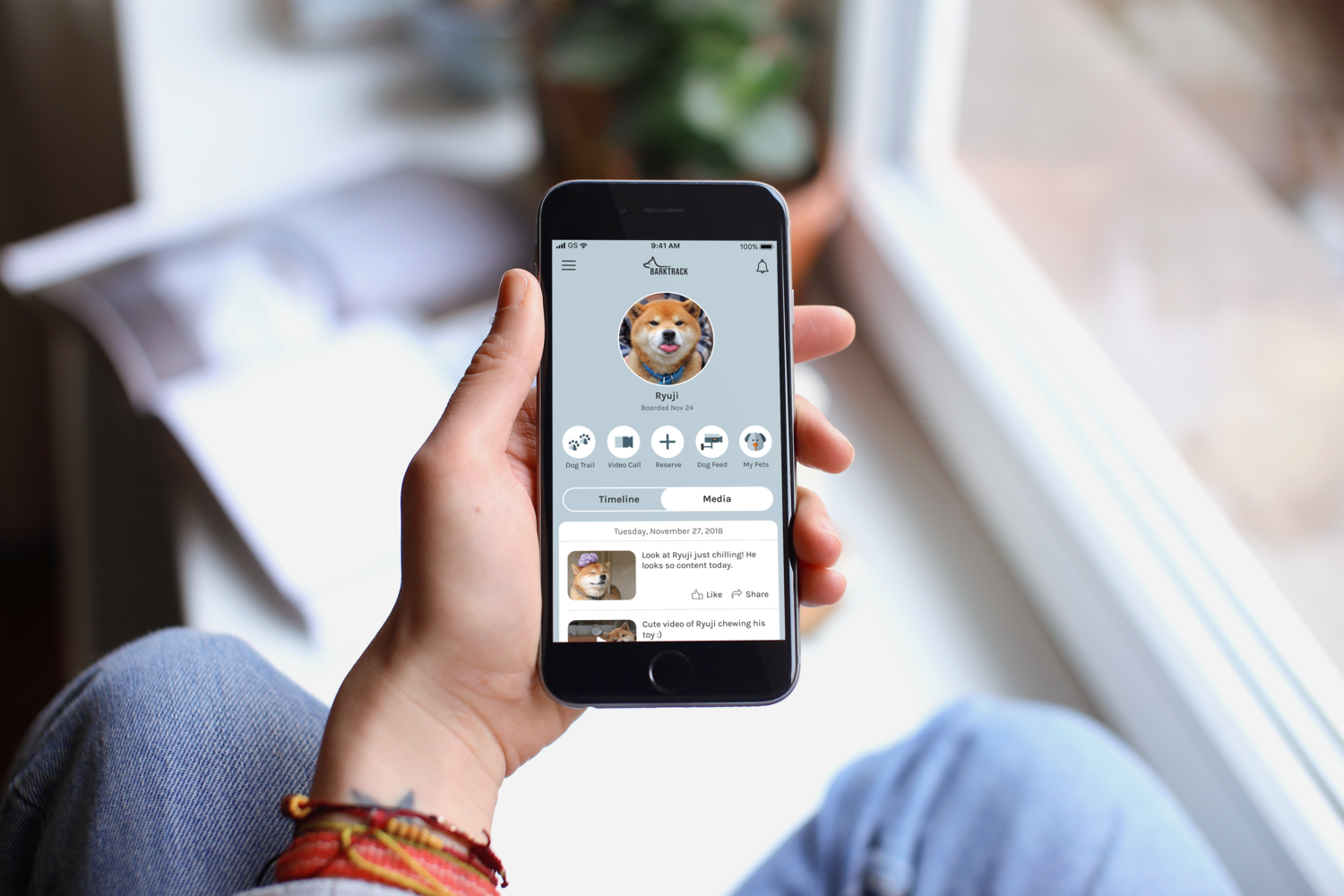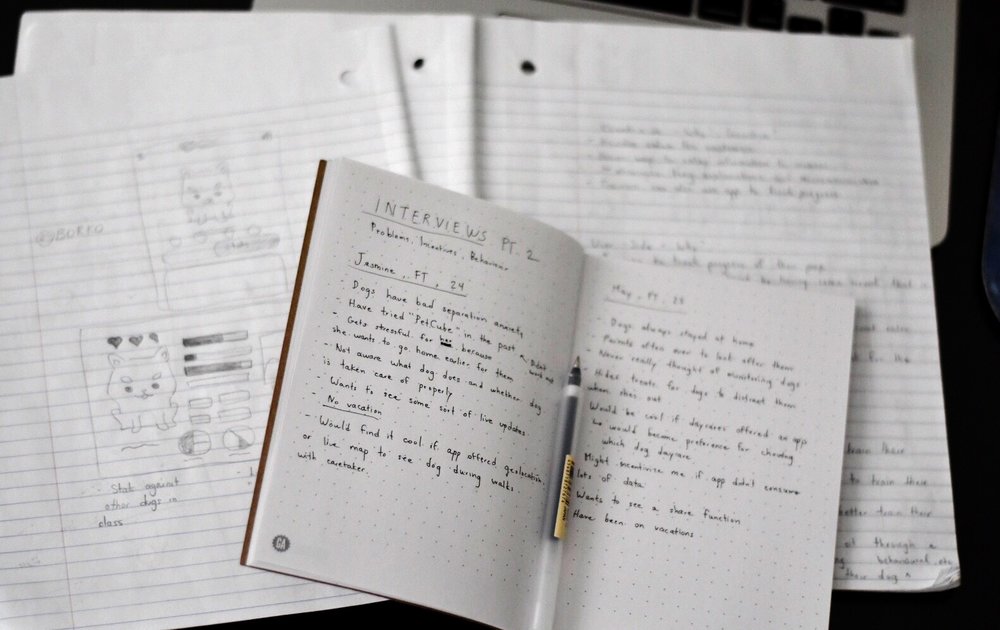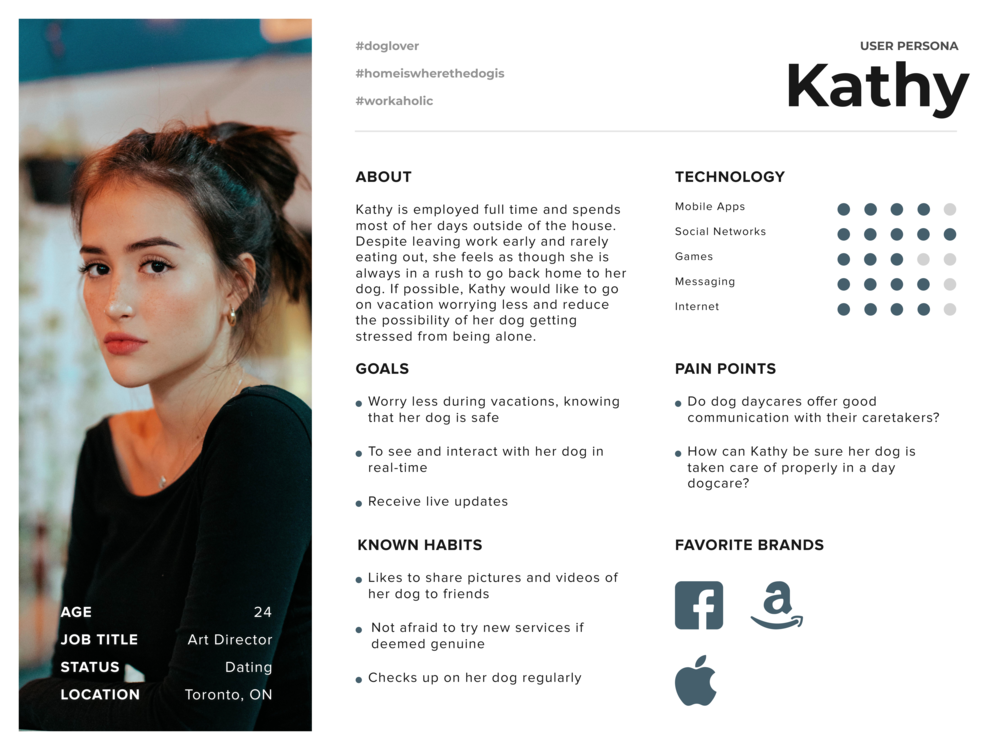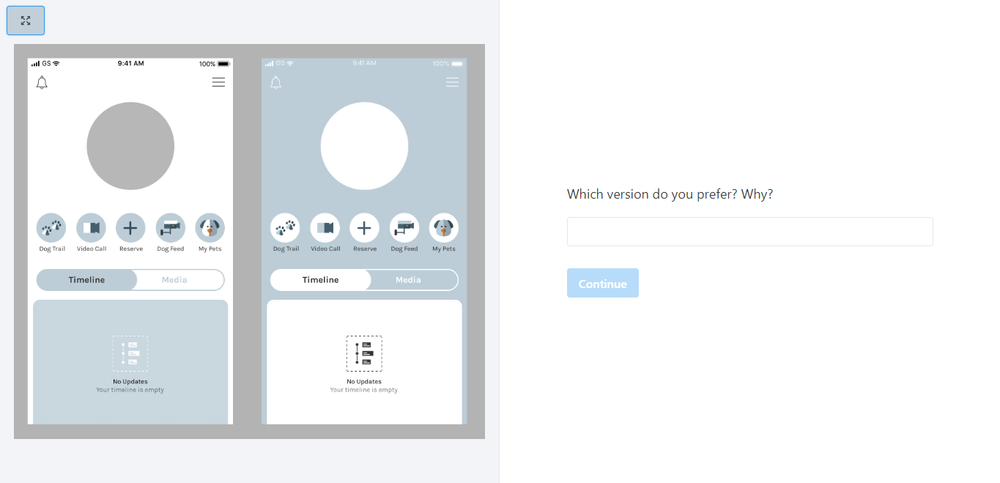
“Your bags are packed, you’re ready to leave, you even reserved a spot for your dog at the local boarding facility in town. But despite knowing you are leaving your dog in good hands, you still feel a sense of guilt and are anxious about leaving him or her behind. How can any dog owner be at ease when they’re away? ”
My first user research task was competitive analysis. By assessing direct and non-direct competitors in the dog boarding service market, I was able to get a clear picture of a typical boarding process. To my surprise, I found that no dog daycares offered their own inhouse app and relied solely on a trust system for new and existing customers. As for dog boarding alternatives, users opted for popular third-party daycare apps such as ‘GoFetch’ and ‘Rover’ to facilitate their dog boarding process. The difference? These apps allowed for better communication and provided the user with the option of searching for their own caretakers or families suitable to board their dog.

Following my competitive analysis, I conducted thorough interviews with seven individuals of different backgrounds. Ranging from unemployed parents to young adults employed full time, I was able to gain insight as to how different users approach their dilemma.
In these interviews, I had the goal in mind of determining the following:

From this research, I learned that the majority of users interviewed favored having a family or friend look after their dog. When asked why, 71% of the users all expressed dog daycares as an obsolete service with 29% of them actually being concerned for their legitimacy. One user even pointed out a daycare to be a scam when she discovered the promised service was ingenuine.
As for boarding alternatives, users who considered daycare apps decided against the service because of underlying safety concerns. Although daycare apps offered the benefit of choosing your own caretaker, not all have received appropriate medical training for cases of emergency.
Ultimately, users felt more comfortable leaving their dog with someone they knew, but wished for a better way to remotely monitor them. Younger users were more open to trying new technologies, one such as PetCube, a Wi-Fi pet camera to combat their separation anxiety while older users remained adamant about traditional dog-sitting methods. Neither were able to find satisfaction in their solutions.
As a result of the possible safety concern and lack of communication, owners preferred to employ their own solutions opposed to accepting dedicated dog daycares. Understanding this user conflict, what could Barktrack offer differently to change this attitude and incentivize users into choosing dog daycares?
To help Barktrack create this point of distinction, I asked my interviewees to propose their ideal daycare app. What I gathered were three commonly mentioned features. Users wanted a daycare app that provides live updates, allow for real-time interaction, and improves communication between dog owners and caretakers.
These features would come to be the framework that shaped my design approach.

I defined a primary and secondary persona, each addressing a key concern.

Using these personas, I crafted basic job stories and mapped out low level user flows to better understand my users.

In doing so, I was able to refine my design framework and develop three principles for Barktrack to adhere to.
Barktrack must:
With these newfound principles, I set out to build a feature-rich and gamified experience for my target users. Drawing inspiration from tracking and daycare apps, as well as pet simulation games, I began sketching low-fidelity wireframes on paper to explore different ideas and converging them into one design. After several rounds of user testing with paper prototypes, I moved onto high-fidelity mockups.


As I iterated my design, I eliminated user assumptions by conducting usability tests and constantly gathering feedback from real users. In my tests, I found the most success experimenting with multiple variants of one design and using A/B testing to determine what was the most optimal for Barktrack. Involving my users helped to validate feature builds and push forward the design process into the prototyping phase.

With the objective of promising peace of mind, I designed Barktrack to resemble a pet simulation game. Drawing inspiration from games such as Tamagotchi and incorporating elements from modern tracking apps, Barktrack offers users a unique service by gamifying their dog boarding experience. Throughout my research process, I compiled different visual ideas and associated them back to my personas, seeing what excites them best into using Barktrack.

Designing Barktrack was an extremely fun learning experience. I am thankful for my peers and mentor for always supporting my work. Working under a tight deadline has taught me these key takeaways:
If you like what you see and want to work together, shoot a message to the email below.
ptr.khp@gmail.com